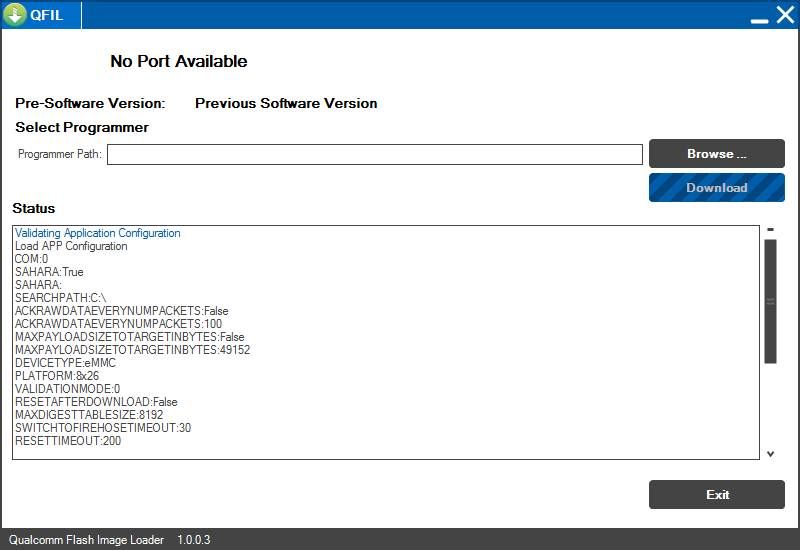The MyPhone myX2 is a low-end smartphone originally released in 2018, equipped with a quad-core MediaTek MT6580 and 1 GB of RAM. Owners of this device frequently report slowdowns, app crashes, random reboots, and even software corruption or bricking after botched modifications. Given the limited hardware, many of these symptoms stem from corrupted system files or partial ROM flashes. Reinstalling the original stock firmware is often the only reliable fix to restore basic usability.
This article provides the official (or publicly circulating) firmware for myX2, along with essential details and a quick flashing method. Use the complete hub guides (links below) for full step-by-step instructions.
MyPhone myX2 Firmware Details
Below are the key specifications and firmware attributes for the myX2. Use this information to confirm compatibility before flashing.
| Attribute | Details |
|---|---|
| 📱 Device | MyPhone myX2 |
| 🆔 Chipset | MediaTek MT6580A (quad-core, 4× Cortex-A7) |
| 🤖 Android OS | Android 8.1 Oreo (Go Edition) |
| ✅ Build / Version | A5518_MYX2_20180604_V1.20 |
| 📂 File Type | MTK / SP Flash Tool Scatter-based package |
| 💻 Flashing Tool | SP Flash Tool (Windows / Linux) |
Download Official Firmware for MyPhone myX2 (MT6580)
- Build: A5518_MYX2_20180604_V1.20 (unofficial public build)
- File Name: Myphone_MYX2_MT6580_20102018.zip
- Size: ~639 MB
- 🔗 Download Link: Download (MediaFire)
Some of the Real-World Issues This Firmware Fixes
Users of the myX2 have reported various software issues with no good official support due to its low end specs. Flashing this firmware can address a number of common faults:
- Bootloop / soft brick recovery: Many users report the device gets stuck on logo or fails to boot after attempted mods or corrupted system files.
- IMEI or modem loss / no network: After tinkering or wiping, network connectivity or IMEI may vanish — applying the stock ROM often restores the correct modem/NVRAM data.
- Persistent app crashes / “Unfortunately, app has stopped” errors: Because the system partition may be corrupted or mismatched, a full reflash can restore stability.
- Performance lag / stuttering: On a 1 GB device, even minor software errors or leftover patches can dramatically slow performance; reinstalling a clean firmware helps.
- Failed OTA or stuck during update: Some users have reported broken OTA updates on this model; flashing manually ensures the update completes.
Crucial Prerequisites Before Flashing
Make sure you prepare carefully — mishaps are common on low-end MTK devices.
- Back up your user data, contacts, photos, etc. Flashing will erase / overwrite system and user partitions.
- Ensure you have the correct USB VCOM / MTK USB drivers installed on your PC.
- Download and extract the firmware package fully (don’t just open inside the ZIP).
- Have the correct SP Flash Tool version (preferably a stable version known to work with MT6580).
- Use a reliable USB cable and avoid interruptions (don’t unplug mid-flash).
- Ensure your PC’s battery or power is stable (avoid power cut during flash).
How to Flash the Firmware
For a full, illustrated step-by-step guide, see our main MTK flashing hub page.
- Extract the `
Myphone_MYX2_MT6580_20102018.zip` into a fresh folder. - Install MTK USB drivers on your PC.
- Open SP Flash Tool, click “Scatter-Loading” and select the `MT6580_Android_scatter.txt` in the firmware folder.
- Set the flashing mode to **“Download Only”** (or **“Firmware Upgrade”** if you’re upgrading/downgrading).
- Power off the phone completely (remove battery if removable, wait a few seconds, then reinsert).
- Click “Download” in SP Flash Tool, then immediately connect the phone to your PC via USB.
- Wait for the green checkmark/completion OK in SP Flash Tool.
- Disconnect the phone, power it on, and allow first boot (may take few minutes).
For full, detailed steps with screenshots:
→ How to Flash Stock Firmware to MediaTek (MTK) Phones
Disclaimer: Flashing firmware is a risky process. You may lose all data or even brick your device if done incorrectly. Use at your own risk.






![Motorola Moto E20 XT2155-3 Firmware Flash File Download [Stock ROM] Motorola Moto E20 XT2155-3](https://www.inarguide.com/wp-content/uploads/2022/01/Motorola-Moto-E20-XT2155-3.jpg)